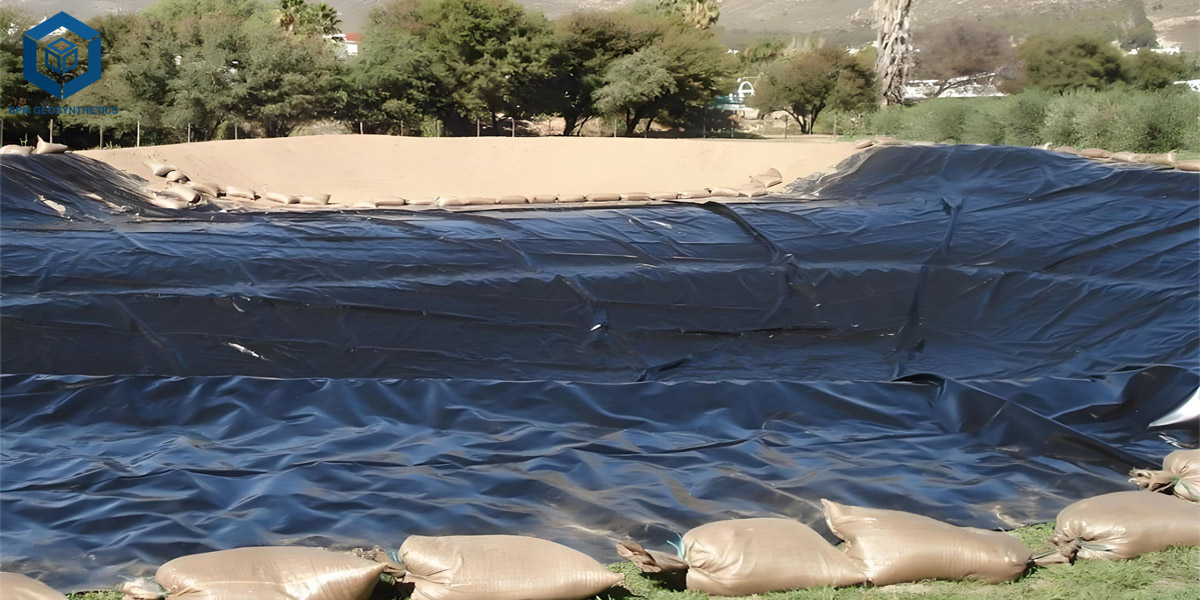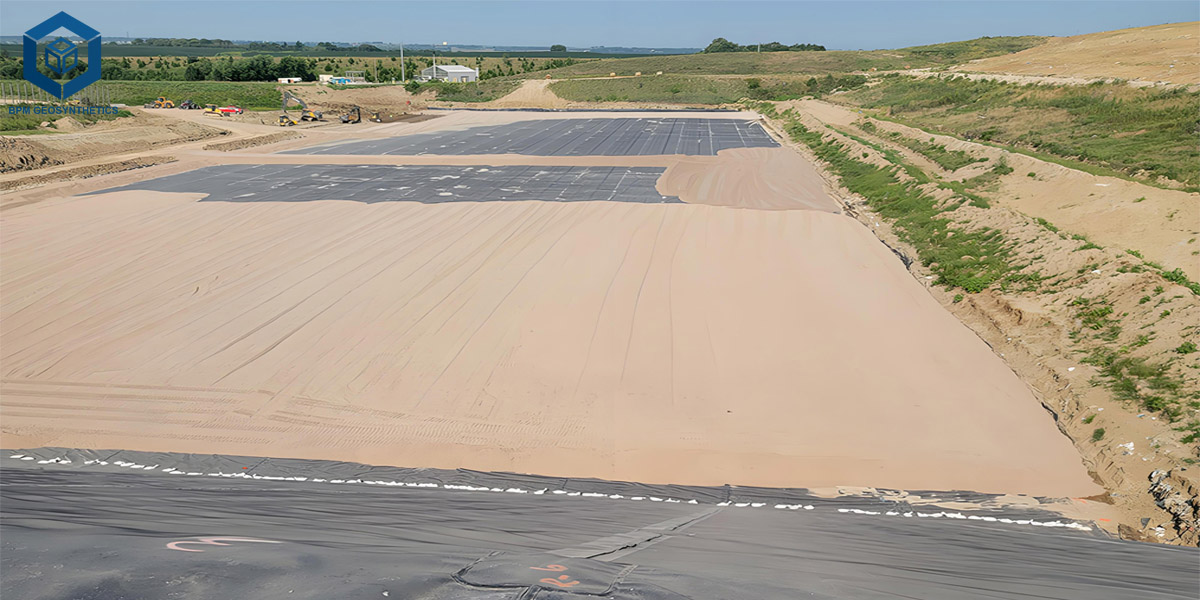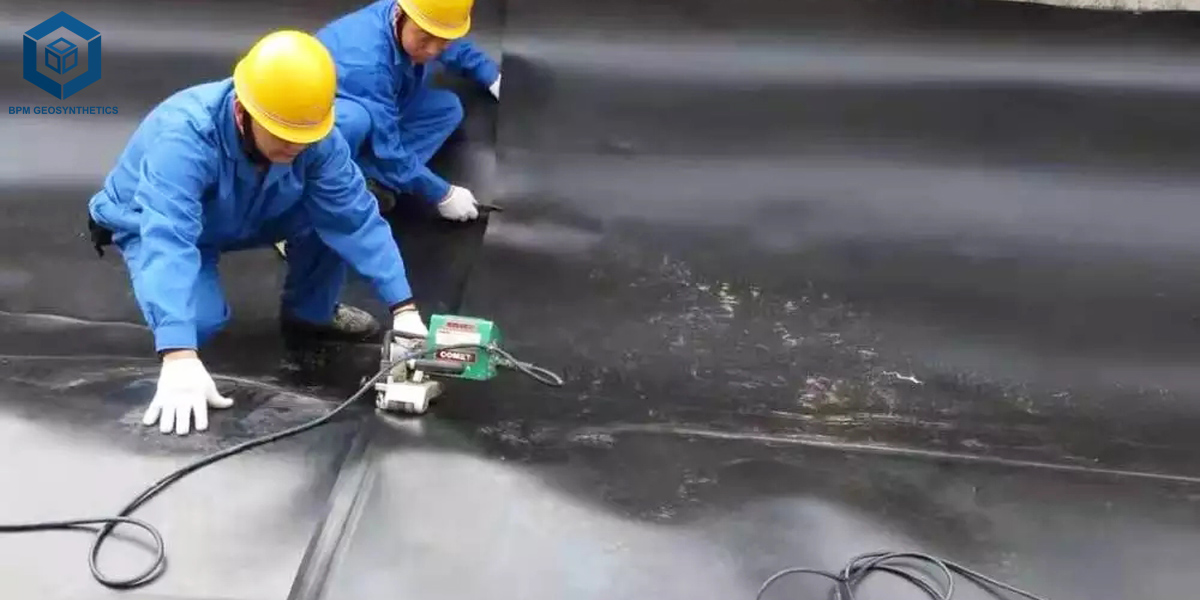What is Dam Plastic Lining?
Dam plastic lining is a relatively effective anti-seepage fabric largely utilized in a variety water conservancy and hydraulic engineering projects. Its primary function is to prevent water leakage, thereby conserving water resources, retaining reservoir levels, and defending the integrity of surrounding infrastructure. By forming an impermeable barrier, it helps reduce erosion, soil instability, and seepage-related damage to dam foundations, slopes, and adjoining land.
This lining is typically manufactured from high-strength polymeric materials such as high-density polyethylene (HDPE), polypropylene (PP), polyvinyl chloride (PVC), artificial rubber (e.g., EPDM), or multi-layer composite membranes. These elements are in particular engineered for durability, flexibility, and environmental resistance, making them splendid for long-term use in every static and dynamic water containment systems.
In addition to its low permeability, dam plastic lining offers gorgeous corrosion resistance, correctly withstanding the penalties of chemicals, salts, and herbal assets oftentimes contemporary in natural or contaminated water. It moreover possesses sturdy anti-aging properties, retaining its bodily and mechanical basic overall performance beneath prolonged publicity to UV radiation, extreme temperatures, and local weather fluctuations.
Due to its combination of impermeability, strength, and chemical stability, dam plastic lining performs a indispensable role in making certain the safety, functionality, and sustainability of dams, canals, reservoirs, and specific large-scale hydraulic structures.
1. What Are the Main Features and Applications of Dam Plastic Lining?
1.1 Dam Plastic Lining Main Features:
- Excellent Anti-Leakage Performance:The dam lining membrane affords a instead exceptional barrier toward water seepage. Its low permeability helps hold reservoir water levels, restriction water loss, and stop erosion brought on via uncontrolled seepage.
- Strong Structural Support:Designed to face up to hydrostatic stress and mechanical stress, the plastic lining enhances the average structural integrity of the dam, making positive long-term steadiness even under fluctuating water ranges and harsh environmental conditions.
- Fast and Easy Installation:Compared to standard clay or concrete linings, dam plastic liners—especially HDPE geomembranes—are lightweight, flexible, and reachable to weld on-site, appreciably lowering improvement time and labor costs.
1.2 Typical Application Areas:
- Water Conservancy Projects:Widely used in dams, levees, canals, and irrigation reservoirs, plastic linings help maintain water and defend the form from indoors erosion.
- Environmental Protection Projects:Ideal for sewage remedy ponds, hazardous waste containment, and landfill cells, the area impermeability and chemical resistance are quintessential for groundwater protection.
- Urban Flood Control and Emergency Response:During flood season, plastic liners can be deployed for brief diversion channels, emergency reservoirs, or reinforcement of embankments, providing rapid security in town and semi-urban areas.
2. What Is Dam Plastic Lining and How Does It Work?
Dam plastic lining is an impermeable barrier cloth used to stop water seepage in dams, reservoirs, and different hydraulic structures. It performs a imperative function in conserving water, defending dam infrastructure, and lowering the threat of environmental contamination. Typically made from high-strength polymers such as HDPE (high-density polyethylene), PVC (polyvinyl chloride), or EPDM rubber, these linings provide terrific sturdiness and resistance to harsh environmental conditions. Their plan ensures a lengthy provider existence even in worrying climates and beneath mechanical stresses.
2.1 Key Characteristics of Dam Plastic Lining
- Impermeability:Dam plastic lining has extraordinarily low permeability, efficiently stopping water from leaking thru the dam basis or embankment. This helps preserve reservoir water ranges and protects the surrounding soil from erosion and contamination.
- Flexibility and Conformity:The HDPE liner is bendy sufficient to conform to irregular surfaces, permitting it to be utilized to a huge vary of dam shapes and slopes. This adaptability ensures complete insurance and reduces vulnerable factors the place leakage may want to occur.
- High Tensile Strength:It can face up to stress from massive volumes of saved water and withstand mechanical harm prompted through soil movements, settlement, or the use of heavy tools in the course of building and maintenance.
- Chemical and UV Resistance:The substances used in dam plastic lining face up to degradation induced by using chemical substances oftentimes discovered in herbal water or contaminated environments, as properly as ultraviolet radiation and excessive weather. This resistance ensures the liner’s effectiveness over many years.
2.2 How Dam Plastic Lining Works?
- Surface Preparation:Before installation, the base surface—whether soil, clay, or concrete—is cleaned, leveled, and compacted to create a stable, clean subgrade that helps the liner and prevents punctures or tears.
- Liner Deployment:Rolls of plastic lining are cautiously unrolled over the organized surface. Care is taken to keep away from wrinkles and make certain ideal overlap between adjoining sheets, which is vital for developing a non-stop barrier.
- Seaming and Welding:Adjacent panels are joined collectively the usage of thermal welding strategies such as warm wedge or extrusion welding. These methods create strong, water-resistant seams that hold the liner’s impermeability and structural integrity.
- Anchoring:The edges of the liner are securely anchored into trenches or included with backfill fabric to stop displacement induced by using wind, water pressure, or different forces.
- Protective Covering (if needed):Depending on the mission requirements, a shielding layer such as soil, sand, or geotextile material may additionally be positioned on pinnacle of the lining. This protects the liner from mechanical damage, UV exposure, and put on all through operation.
3. How Long Does Dam Plastic Lining Last in Harsh Environments?
Dam plastic lining, in particular these made from top notch substances like high-density polyethylene (HDPE), is designed to face up to difficult environmental stipulations and furnish long-term performance. Typically, HDPE dam liners have an predicted provider existence of 20 to 30 years or greater when precise set up and maintained.
Several elements make a contribution to this longevity:
- UV Resistance: Modern dam liners include UV stabilizers that shield the cloth from degradation induced via extended publicity to sunlight, which is essential in out of doors applications.
- Chemical Resistance: The lining resists injury from chemical substances usually located in soil and water, along with acids, alkalis, and salts, stopping untimely wear.
- Temperature Tolerance: Dam plastic liners hold flexibility and power throughout a extensive temperature range, permitting them to function in each warm and bloodless climates except cracking or turning into brittle.
- Mechanical Durability: Their excessive tensile electricity and resistance to punctures and abrasion allow them to suffer stresses from soil movement, water pressure, and set up activities.
Proper installation, such as cautious floor instruction and impenetrable welding of seams, alongside with shielding cowl layers when necessary, in addition extends the lifespan of the lining. Regular inspection and renovation can additionally assist become aware of and tackle any troubles early, making sure the lining stays high-quality over decades.
In summary, with gorgeous cloth resolution and set up practices, dam plastic lining can reliably serve for more than one a long time even in harsh environments, making it a long lasting and most economical answer for seepage control.
4. How to Weld Dam Plastic Lining?
The welding process of Dam Plastic Lining includes the following key steps:
4.1 Preparation: Before welding, it is necessary to ensure that the surface of Dam Plastic Lining is clean, free of oil, water, dust, fine sand and other substances. At the same time, according to the specific conditions of the construction site and the climate conditions at the time, a 2% to 5% extension amount should be appropriately pre-released.
4.2 Selection of welding equipment: Select appropriate welding equipment according to the thickness of Dam Plastic Lining. Generally speaking, small welding machines are suitable for welding Dam Plastic Lining with a thickness of 0.2mm-1.0mm, and large welding machines are suitable for welding geomembranes with a thickness of 1.0mm-3.0mm. These equipments all use double-gauge hot melt welding.
4.3 Setting of welding parameters: Welding temperature is one of the important factors affecting welding quality. According to design requirements, the welding temperature of Dam Plastic Lining is usually 180~300°C. In actual operation, it is necessary to adjust the welding temperature and walking speed according to factors such as air temperature and wind speed, and determine the optimal welding process parameters through trial welding.
4.4 Welding process: During the welding process, attention should be paid to the flatness and beauty of the weld to avoid dead fold welding. At the same time, the speed and temperature should be fine-tuned according to the actual situation on site to keep the weld straight and neat. When the length of Dam Plastic Lining is not enough and needs to be spliced in the long direction, the transverse weld should be welded first, and then the longitudinal weld, and the transverse welds should be more than 50cm apart.
4.5 Defect treatment: During the welding process, unqualified parts such as welding discount, weld damage, and penetration may appear. At this time, hot melt adhesive can be used to repair defects.
4.6 Quality inspection: After welding is completed, Dam Plastic Lining needs to be quality inspected. This includes visual inspection, inflation inspection, and destructive testing. Visual inspection is mainly a detailed inspection of the appearance and weld quality of the laid Dam Plastic Lining. The inflation intensity of the inflation pressure test is 0.25mpa, and there is no leakage for 5min. When conducting a tensile test (destructive test), the standard is that when doing peeling and shearing tests, the weld is not torn apart but the geomembrane base material is torn and damaged. At this time, the welding is qualified.
The above is the basic process flow of Dam Plastic Lining welding. It should be noted that the specific welding parameters and operation details may vary depending on the different Dam Plastic Lining materials and construction environments. Therefore, in actual construction, the welding process should be adjusted according to the specific situation, and the relevant construction specifications and technical standards should be strictly followed.
5. Summarize
Dam plastic lining is a high-quality, long lasting membrane made from superior substances like HDPE, designed to successfully forestall water seepage in dams and reservoirs. It helps preserve water, guard infrastructure, and minimize environmental dangers thru its magnificent resistance to chemicals, UV exposure, and temperature changes. For dependable overall performance and specialist guide in dam lining solutions, BPM geomembrane gives top-grade dam plastic lining merchandise tailor-made to meet your venture needs.






